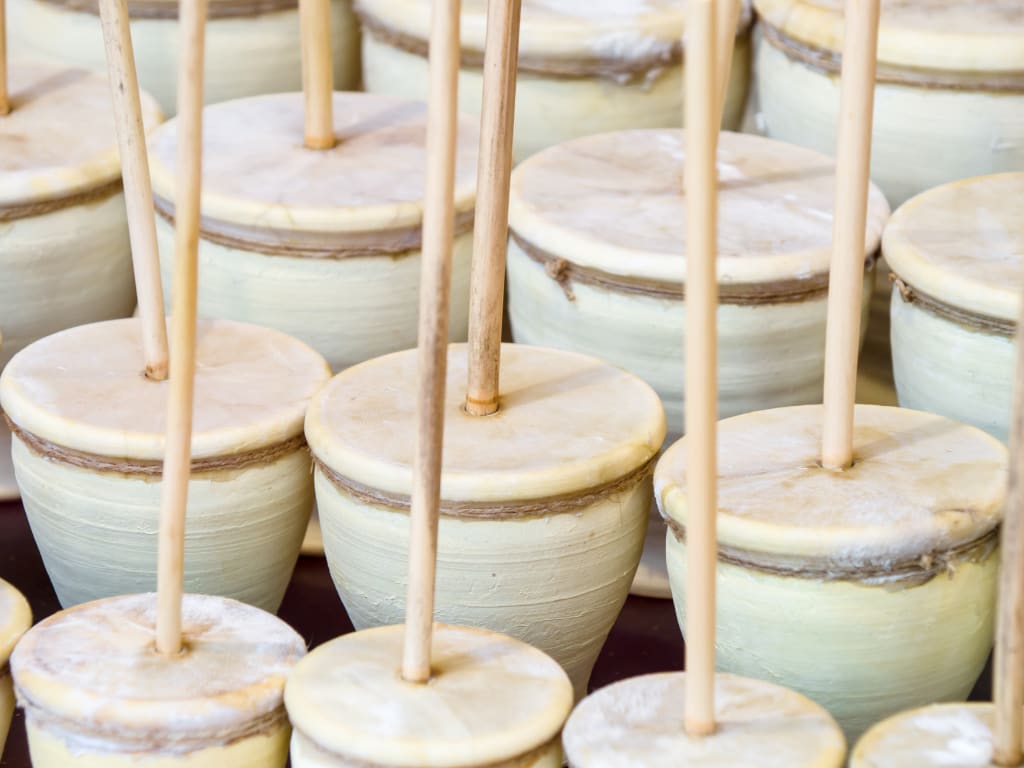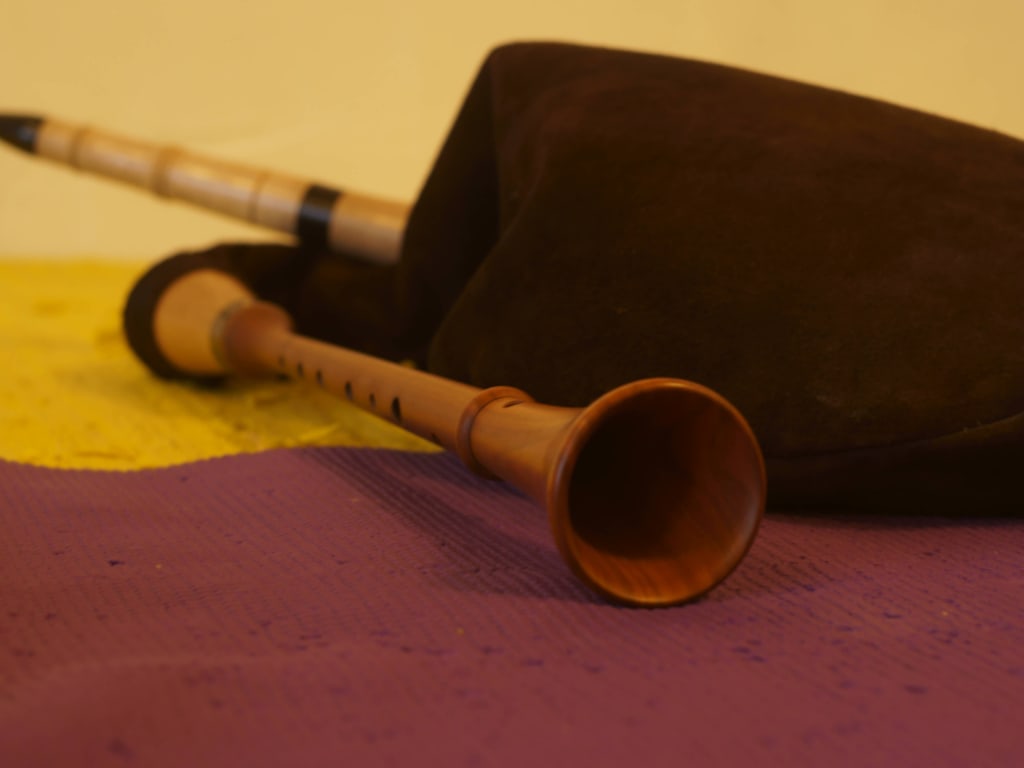8 Spanish Instruments That You Will Want To Listen Now
October 25, 2022
Win a FREE Trip to Spain!
Exciting Announcement! For the first time, we're thrilled to offer exclusive trips to the heart of Spain - an experience like no other. This isn't your typical tourist journey; it's a unique opportunity to immerse yourself in authentic Spanish culture, alongside real locals and our passionate team.
But there's more! Simply by requesting information about this amazing trip, you'll be entered into a special draw to win a Fully Paid Trip to Spain for Two. And that's not all - everyone who inquires will receive an exclusive bonus gift, valued at $500, available only now.
Ready to Discover the Real Spain?Click Here ↑ to Request Information & Enter the Draw!
Have you ever met a person that doesn’t like music? I have, twice. Their justification was that they didn’t see the point in listening to it, so they didn’t even try to find something that suited them. How do you feel about that?
And are you a music person? I guess that if you are here, it’s a yes. And just like some people don’t need music, others help create it. Which one would you rather be?
In this article, I want to share the Spanish instruments that you should be listening to by now, and I’ll add an extra tip in honor of genuine music lovers.
Also, we asked Spanish people “What are 3 Instruments that Originated in Spain?” Watch the video at the end of this article to find out!
So, be ready for the instrumental concert that is coming in the next few minutes. I bet you’ll find a new sound to vibe with for the next week.
Table of Contents ▼ ▶
1. Castanets

I am pretty sure you know what castanets are. If you have seen any flamenco dance, you know that the dancers usually use small instruments in their hands that give more energy to their steps. Well, those are “castañuelas” or castanets.
The castanets are percussion instruments from the clappers family. This means that they are very straightforward instruments to play and produce music with. This musical device originated three thousand years ago while the Phoenicians inhabited the Iberian peninsula. However, the Spanish culture adopted it and introduced it to its most famous art: flamenco. Still, this instrument is not only used in the Spain peninsula but also in the Balearic Islands and southern Italy.
So, the castanets are two wooden shells attached to a string that should go around your thumbs. Traditionally, we should use one per hand, and the sound we create with the right hand should be more complex than the ones made with the left. As I mentioned before, the purpose of this Spanish instrument in our culture is to create a sound that matches the rhythm of the tapping feet of flamenco dancers.
How should it sound?
Well, I am not just giving the videos. I want you to know what each part means. Here we go!
- RI: RI is a touch meant for the right hand. The wrist should move as little as possible and make 4 strokes. The first stroke with the little fingers, the second one with the ring finger, the third one with the middle finger, and the fourth one with the index finger.
- A: The stroke that follows RI with the left hand.
- PI: After RI and A, this sound is produced by striking the ring and middle finger at the same time.
- TA: Both hands’ index and middle fingers strike the castanets simultaneously. It’s the beat of A and PI together.
- CHI: This beat consists of the clash of both castanets by bringing the right hand to the left.
Now you know what the strokes of the castanets mean, I think this will make it easier to learn!
2. Spanish Guitar

Like the castanets, there are ancient paintings that prove that the guitar originated some three thousand years ago in Egypt. But in the fifteen century, the ancestor of the modern guitar made its first appearance in Europe.
More than Europe, it was explicitly in Spain where the modern concept of the Spanish, aka classical guitar, was created. It evolved from the vihuela, a four double-string instrument with a long neck that made eight-string in total. It wasn’t until the nineteenth century that the six single-string versions appeared in Europe. And it was the Spanish Antonio Torres that designed the current version of the classical guitar in 1817.
The Spanish guitar is made with a cedar top to create a more precise sound for each note. You must know that the Spanish guitar is different from the flamenco guitar. They are very similar, but the second one is built, so the sound is brighter and snappier to accompany flamenco.
I have the complete story on the Spanish guitar right here!
The One and Only Spanish Guitar: It’s Beautiful and Different Sound
3. Accordion

Sadly, unlike the two previous instruments, I don’t have a clear or complete history of the Spanish accordion. But I will write down all the facts I found about it, and we can match the dots together.
First of all, the accordion is a musical instrument played by stretching and squeezing with the hands, the melody and chords being sounded by buttons or keys. And, it is part of the box-shaped musical instruments.
Going back to its origins, the first accordion was created in Viena. That is a fact. In 1829, Demian Cyrill and his two sons, that built piano, registered the creation of a new instrument. The family created these instruments thinking of the not-so-gifted musical people, so they could learn how to play something fast.
So, what happened in Spain? Well, we adapted it. We know that the “madrileño” Don Juan Moreno built the first Spanish accordion in 1841, inspired by the imported instruments from France. Besides this, we know that the accordion is mainly played in the northern regions of Galicia, Navarra, La Rioja, Cantabria, and especially the Basque Country.
In this last autonomous region, the instrument is known as Trikitixa, a smaller accordion created in 1889 and played in the Basque country since that century. It usually takes part in “romerias” or religious pilgrimages.
The video above exemplifies how people from the Basque Country would play this instrument!
4.Txistu

The Txistu or the Spanish flute is a Basque instrument pronounced as follows: shi-s-tu. Or something like, I think that would be the closest way of this correct pronunciation.
So, the Txistu is a flute with a vertical beak and only three holes in the front of the instrument. Flutes are part of the edge-blown earphones category, so the Txistu is part of them too but with a name in basque.
Unlike the accordion, the Txistu did originate in Spain, as historians found an early version made of bone in the territory of southern Navarra. This ancient Tixstu example should have been more than 25,000 years.
We only know that these instruments have been present in the basque culture for centuries. So much so that it is used on many occasions. Either a funeral or the announcement of a whale on the coast, the Txistu will sing!
I find the sound of this instrument pretty happy and relaxing! What about you?
5. Timple

You probably think this is a ukulele, but it is not. What you see in the video is a timple!
A timple is the Canarian version of the ukelele. It is usually 60 centimeters on top, made of wood, mainly white spruce, with five strings. The parts of a Timple are the case, which comprehends the soundboard and the soundhole, then the neck and pegbox.
Remember the ancestor of the Spanish guitar? The vihuela? Well, that instrument was introduced to the island in the eighteenth century. There are records by Pablo Minguet and Andrés Soto that mention the existence of the timple. After the vihuela arrived, it evolved into the instruments we know today, which have become part of the island folklore. And the first timple builder in Lanzarote was Simón Morales.
6. Bandurria

The bandurria, just like the timple and the Spanish guitar, is a string instrument. Actually, being super objective, it is another type of guitar. In the video above, the bandurria is the first instruments from the left to the right.
Remember that I told you that before, guitars would have double strings? Well, this one is the one that kept them. For me, this guitar is the one medieval entertainers would use in movies to announce something or narrate a story. Or at least that is what the sound reminds me of!
Compared to the guitar, the bandurria has a small body, flat back, and short neck, and the number of strings varies between five to seven double strings. The latter is what makes the sound so melodic.
The bandurria was super popular during the Renaissance. So much so that even the poet Juan Ruiz mentions the instrument in his book “Libro del Buen Amor” (Good Love Book).
In Valencia and the Balearic Islands, the bandurria is known as mandurria.
7. Zambomba

The zambomba or friction drum is a traditional percussion instrument from Andalusia, specifically from the city of Jerez. I think this instrument might be one of my favorites as it reminds Christmas. My favorite season of all!
Hearing the sound of the zambomba in the streets of Jerez means that the holidays are coming up. Actually, this instrument is specifically used for flamenco Christmas carols. The zambomba gives the sound to a combination of religious and profane lyrics that are sung by everyone around. In the video below, you’ll see what I mean by EVERYONE.
In the eighteen century, the zambomba was mainly used for religious carols, but with years it became an essential instrument for flamenco.
The zambomba and flamenco mass is an Andalusian tradition during the holidays.

8. Galician Gaita

The bagpipe or “Gaita Galega” is the most representative instrument of Galician folklore, and it is, by excellence, a symbol of its music.
This Spanish instrument gained popularity during the ninth and tenth centuries as it was the protagonist of the pilgrimage to Santiago de Compostela during the Middle Ages. Actually, during that time, Galicia became an important center for bagpipe music.
This instrument was originally built with animal skin, putting its tubes where the limbs would go. The Galician Gaita consists of a preformed tube, with a reed inserted inside a wineskin called fol. The piper fills the fol with air and compresses it with his arm to maintain the air output with sound. This primitive instrument was joined to a roncón, that is to say, another tube that gives the continuous note.
Almost all the traditional dances in Galicia are performed with the sound of the bagpipe as the main music.

Aula Museo Paco Diez- Valladolid
Remember that I said some people help make the music? Paco Diez is one of the best Spanish contributors to music. He is an expert in traditional Iberian and Sephardi music, so recognized for his cultural contribution to music that the kings chose him to perform in the palace. Paco has been a music teacher worldwide and has given more than three thousand concerts.
He creates the “Aula-Museum” to preserve traditional Iberian instruments that many people do not know. In the video that I have linked below, you’ll see how he sings by playing some percussion with a bucket! And it is fantastic! If you ever visit Castille-Leon and are a music connoisseur, don’t forget to visit the museum!
![😃INSTRUMENTOS TRADICIONALES de la PENÍNSULA IBÉRICA 👍[ Visitamos el Aula-Museo de Paco Díez ]😮](https://img.youtube.com/vi/96R8tDzjnNQ/mqdefault.jpg)
And that is it on Spanish instruments! In this post, you have read about the castanets, the Spanish guitar, the Spanish flute, the accordion, the txitsu, the timple, the bandurria, the zambomba, and the Galician bagpipe.
Oh, and here’s the video I promised:

I hope you have found this helpful and entertaining. Don’t forget to leave us a comment!









